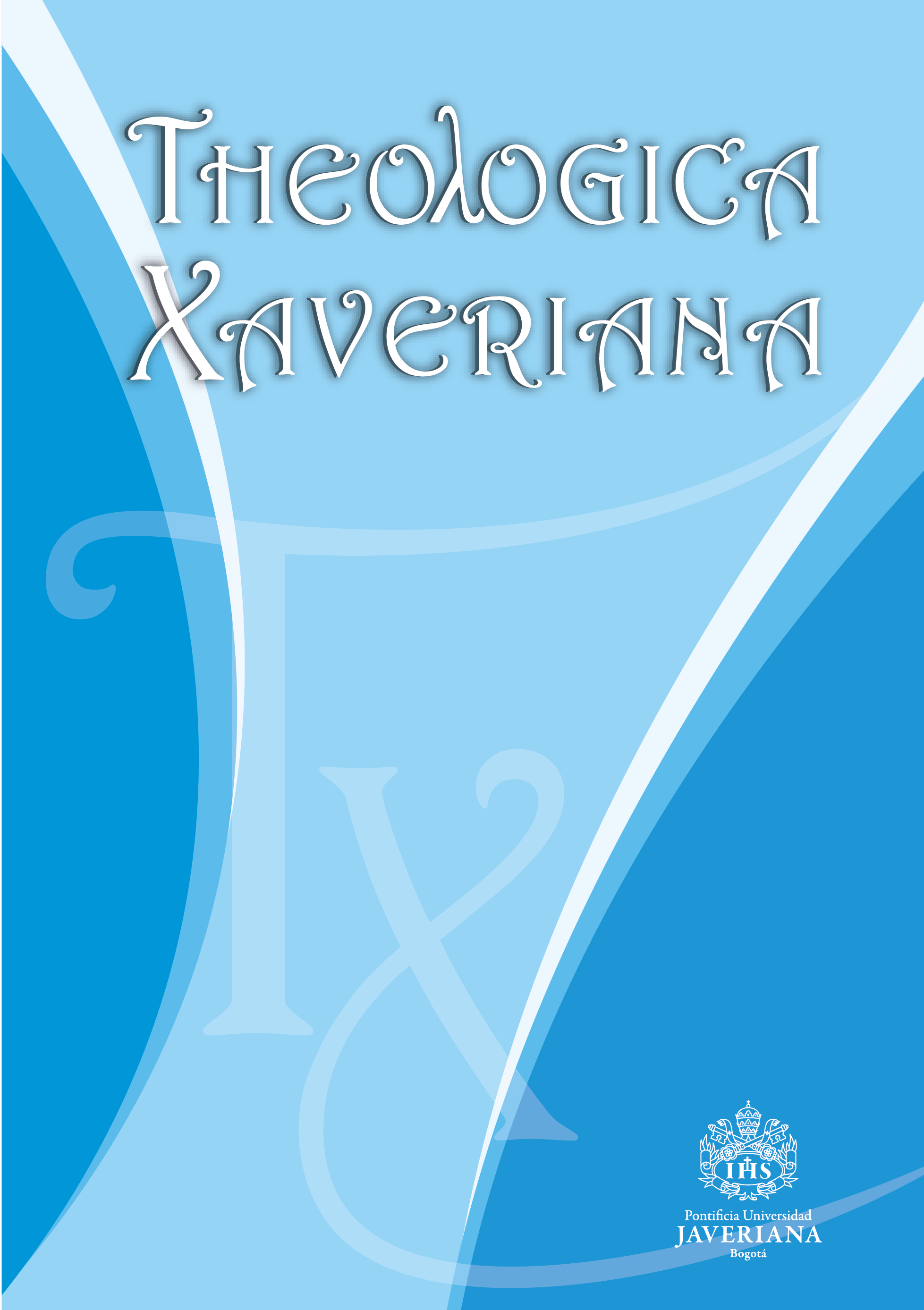Abstract
Traditionally, biblical characters tend to be seen as models, and not as mirrors of human behavior, so it is almost a sin to question their practices, even when they attempt against the lives of children and women. The Hebrew Scriptures are both the national history of a people and a completely religious account of the encounters of this people with their God. The aspects of this national history do not always conform to the ideals of religion, nor do certain issues that are taken for granted in a given text meet the necessary standards in the development of revelation. This article addresses the story of Ishmael’s and Isaac’s sacrifices from the perspective of the family’s intrigues and not only that of the patriarch Abraham and his beloved son Isaac. Likewise, it supports the hypothesis that Gn 22 is a midhrastic lecture of ancient traditions, especially Ishmael’s sacrifice in Gn 21.
Barrios, Hernando. “Del sacrificio de ‘Abrahan’ al sacrificio de su ‘descendencia’: exégesis y teología narrativa del sacrificio en Génesis 22,1-19”. Franciscanum LII/ 153 (2010): 15-55.
Bergen, Robert. “The Role of Genesis 22, 1-19 in the Abraham Cycle: A Computer-Assisted Textual Interpretation”. Criswell Theological Review 4/2 (1990): 313-326.
Brueggemann, Walter. Teología del Antiguo Testamento un juicio a Yahvé. Testimonio. Contención. Defensa. Salamanca: Sígueme, 2007.
Camelo, Miguel. “Padre… y ¿dónde está el cordero para el holocausto?” Una aproximación literaria a la Aquedá en Génesis 22,1-19”. Franciscanum LII/153 (2010): 99-126.
Coats, George W. “Abraham´s Sacrifice of Faith: A Form-Critical Study of Genesis 22”. Interpretation 27/4 (1973): 389-400. https://doi.org/10.1177/002096437302700402.
Day, Jhon. Molech: A God of Human Sacrifice in the Old Testament. Cambridge (U. K.): Cambridge University Press, 1989.
De Vaux, Roland. Instituciones del Antiguo Testamento. Barcelona: Herder, 1976.
Derrida, Jacques. Dar la muerte. Barcelona: Paidós, 2000.
Desroches Noblecourt, Christiane. La mujer en tiempos de los faraones. Madrid: Editora Complutense, 2009.
Dewrell, Heath D. Child Sacrifice in Ancient Israel. University Park (PA): Eisenbrauns, 2017.
Eissfeldt, Otto. Molk als Opferbegriff im Punischen und Hebräische und das Ende des Gottes Moloch. Halle: Niemeyer, 1935.
Gaiser, Frederick J. “Sarah, Hagar, Abraham—Hannah, Peninnah, Elkanah: Case Studies in Conflict”. Word & World 34/3 (2014): 273-284.
Gaitán, Tarcicio. “Métodos de interpretación de la Biblia”. Cuestiones teológicas 33/79 (2006): 141-169.
Gottwald, Norman K. La Biblia hebrea. Una introducción socio-literaria. Bogotá: Seminario Teológico Presbiteriano, 1992.
Gregory, Bradley. “Abraham as the Jewish Ideal: Exegetical Traditions in Sirach 44: 19-21”. Catholic Biblical Quarterly, 70/1 (2008): 66-81.
Hernández, Ana. “El sacrificio de Isaac”. Revista digital de iconografía VI/11 (2014): 65-78.
Kessler, Edward. Bound by the Bible. Jews, Christians and the Sacrifice of Isaac. Cambridge (U. K.): Cambridge University Press, 2004.
Kierkegaard, Sören. Temor y temblor. Madrid: Editora Nacional, 1981.
Mena-López, Maricel. “Because of an Ethiopian Woman. Reflections on Race, Gender, and Religion”. En Biblical Feminist Intercultural Theology: Latina Explorations for a Just World, editado por María Pilar Aquino y María José Rosado-Nunes,
145-165. Maryknoll (NY): Orbis Books 2007.
_____. Panorama bíblico latinoamericano. Aproximaciones desde lo femenino y la negritud. Bogotá: Fundación Universitaria San Alfonso, 2010.
Momanyi, Oscar. “The Children of Sarah, Hagar and Mary. A Feminist Perspective on Judaism, Islam and Chistianity”. The Way 52/2 (2017): 73-87.
Montoya G. Brígida. “Comportamiento de la violencia intrafamiliar, Colombia, 2016”. En Forensis 2016. Datos para la vida, editado por el Instituto Nacional de Medicina Legal y Ciencias Forenses, 210-315. Bogotá: Instituto Nacional de Medicina Legal y Ciencias Forenses 2016.
Navarro Puerto, Mercedes. Religión, sexualidad y violencia: lectura bíblica feminista de textos del Génesis. Madrid: Trotta, 2008.
Navarro Puerto, Mercedes, e Irmtraud Fischer (eds.). La Torah, Estella (Navarra): Editorial Verbo Divino, 2009, 263-304.
Neoh, Joshua. “Law and Love in Abraham’s Binding of Isaac”. Law and Humanities 9/2 (2015): 237-261.
Peterson, Carl. “Military Service as Child Sacrifice: Oedipal and Odyssean Perspectives”, International Journal of Applied Psychoanalytic Studies 12/1 (2015): 36-52.
Pikaza, Xavier. Mujeres de la Biblia judía. Barcelona: Clie, 2013.
Römer, Thomas. “Abraham’s Righteusness and Sacrifice: How to Understand (and Traslate) Genesis 15 and 22”. Lousanne: Communio Viatorum 54 (2012): 3-15.
Schwantes, Milton. Historia de los orígenes de Israel. Quito: Centro Bíblico Verbo Divino, 2003.
_____. Sufrimiento y esperanza en el exilio. Historia y teología del pueblo de Dios en el siglo VI a. C. Santiago: Ediciones Rehue Ltda., 1991
Towner, Wayne S. Genesis. Louisville (KY): Westminster John Knox Press, 2001.
Von Rad, Gerhard. Genesis. Philadelphia (PA): Westminster John Knox Press, 1972.
Weippert, Helga. “Das deuteronomistische Geschichtswerk. Sein Ziel und Ende in der neueren Forschung”. ThR 50 (1985): 213-249.
Westermann, Claus. Genesis 12-36. Minneapolis (MN): Fortress Press, 1985.
Wood, W. H. “Jar-Burial Customs and the Question of Infant Sacrifice”. The Biblical World 36/4 (1910): 227-234.
Zucker, David J. “What Sarah Saw: Envisioning Genesis 21:9-10”. The Jewish Bible Quarterly 36/1 (2008): 54-62.
This journal is registered under a Creative Commons Attribution 4.0 International Public License. Thus, this work may be reproduced, distributed, and publicly shared in digital format, as long as the names of the authors and Pontificia Universidad Javeriana are acknowledged. Others are allowed to quote, adapt, transform, auto-archive, republish, and create based on this material, for any purpose (even commercial ones), provided the authorship is duly acknowledged, a link to the original work is provided, and it is specified if changes have been made. Pontificia Universidad Javeriana does not hold the rights of published works and the authors are solely responsible for the contents of their works; they keep the moral, intellectual, privacy, and publicity rights.
Approving the intervention of the work (review, copy-editing, translation, layout) and the following outreach, are granted through an use license and not through an assignment of rights. This means the journal and Pontificia Universidad Javeriana cannot be held responsible for any ethical malpractice by the authors. As a consequence of the protection granted by the use license, the journal is not required to publish recantations or modify information already published, unless the errata stems from the editorial management process. Publishing contents in this journal does not generate royalties for contributors.



